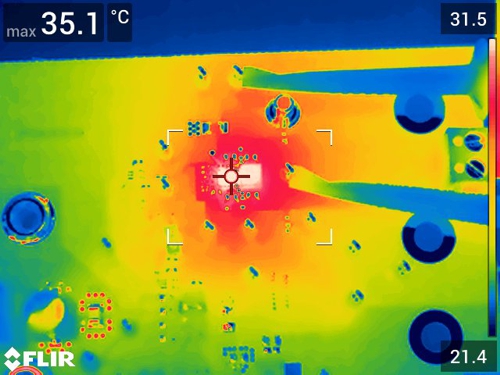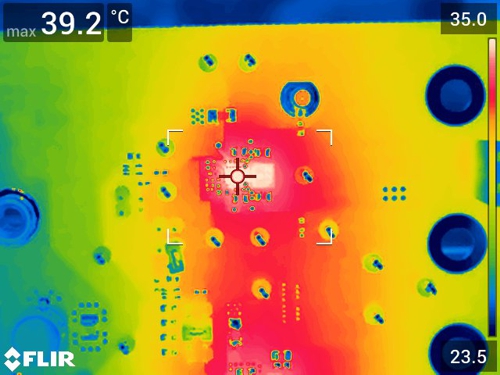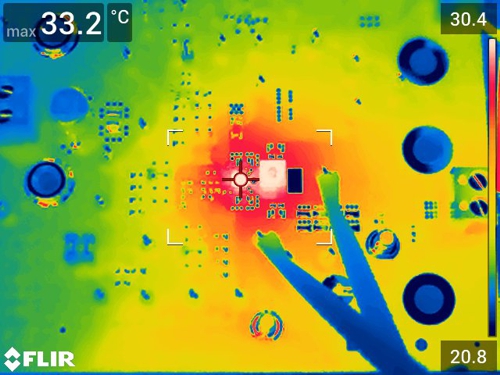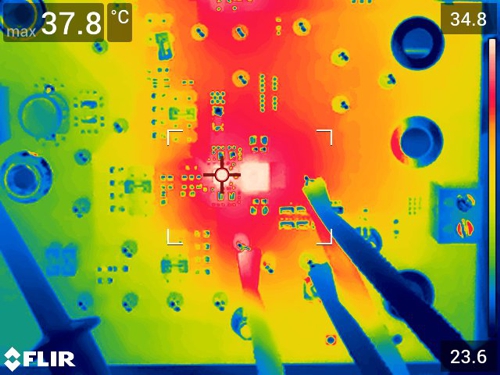SLVUC07A December 2020 – May 2021 TPS543320
- Trademarks
- 1Introduction
- 2Configurations and Modifications
-
3Test Setup and Results
- 3.1 Input/Output Connections
- 3.2 Efficiency
- 3.3 Output Voltage Regulation
- 3.4 Load Transient and Loop Response
- 3.5 Output Voltage Ripple
- 3.6 Input Voltage Ripple
- 3.7 Synchronizing to a Clock
- 3.8 Start-up and Shutdown with EN
- 3.9 Start-up and Shutdown with VIN
- 3.10 Hiccup Current Limit
- 3.11 Overvoltage Protection
- 3.12 Thermal Performance
- 4Board Layout
- 5Schematic and Bill of Materials
- 6Revision History
3.12 Thermal Performance
Figure 3-34 through Figure 3-37 show the temperature rise of the TPS543320 ICs at full 3-A load. Figure 3-34 and Figure 3-35 have only one TPS543320 on and loaded. Figure 3-36 and Figure 3-37 have both TPS543320s loaded. A minimum of a 10 minute soak time was used before taking each measurement.
 Figure 3-34 U1
Thermal Performance – 3-A
Load and U2 off
Figure 3-34 U1
Thermal Performance – 3-A
Load and U2 off Figure 3-36 U1
Thermal Performance – Both 3-A Load
Figure 3-36 U1
Thermal Performance – Both 3-A Load Figure 3-35 U2
Thermal Performance – 3-A
Load and U1 off
Figure 3-35 U2
Thermal Performance – 3-A
Load and U1 off Figure 3-37 U2
Thermal Performance – Both 3-A Load
Figure 3-37 U2
Thermal Performance – Both 3-A Load